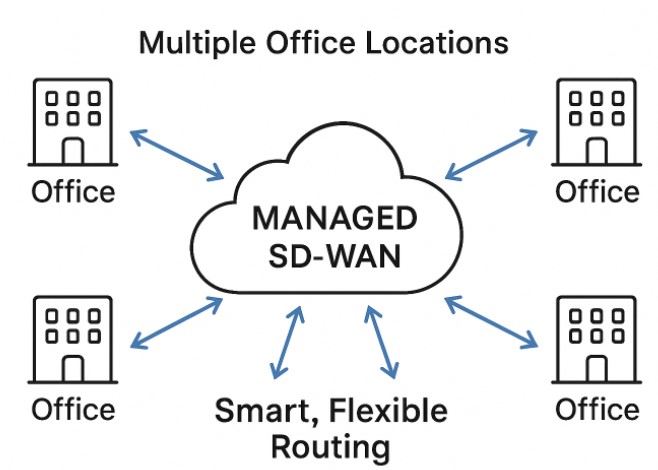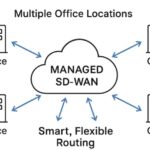As organizations navigate an era defined by digital transformation, their networks must be highly resilient, flexible, and responsive. Managed Software-Defined Wide Area Network (SD-WAN) technologies have quickly become the cornerstone of enterprise connectivity, allowing IT teams to simplify network management while maximizing performance. With SD-WAN solutions, companies gain far more than just basic connectivity—they secure a competitive advantage by future-proofing their network architecture. Leveraging managed SD-WAN enables businesses to shift from traditional, hardware-heavy solutions to software-driven approaches that easily accommodate cloud-first initiatives and globally dispersed workforces. This transformation empowers IT leaders to address bandwidth demands dynamically and maintain business continuity, even in the face of disruption.
Enhancing Network Resilience
Modern networks face increasing pressures from rising traffic volumes, heightened cyber threats, and greater expectations for always-on connectivity. Managed SD-WAN addresses these demands through intelligent traffic steering, which analyzes multiple WAN links in real time and automatically routes data along the optimal path. This approach minimizes latency, mitigates potential outages, and helps keep mission-critical applications up and running even when parts of the network encounter issues. By enabling seamless fallback to secondary circuits or alternate transport types, managed SD-WAN reduces single points of failure common in legacy architectures. For enterprises pursuing resilience as part of business continuity planning, SD-WAN has become nearly indispensable.
Cost-Effective Scalability
Expanding a traditional WAN infrastructure often requires hefty investments in hardware, MPLS circuits, and specialized technical skills. In contrast, managed SD-WAN enables quick deployment of new branches, scaling bandwidth, and supporting remote sites, without upending budgets. Cloud-based orchestration and centralized management allow businesses to right-size resources in real time, so they only pay for the connectivity and performance they actually use.
This flexibility is especially attractive for companies experiencing seasonal traffic spikes, inconsistent bandwidth needs, or ongoing growth. Network adjustments that once took weeks can now occur within hours thanks to SD-WAN’s software-defined nature.
Integration with Cloud Services
As the majority of enterprises shift workloads and applications to the cloud, direct, reliable connectivity becomes a top priority. Managed SD-WAN optimizes the performance of SaaS and IaaS platforms by providing direct-to-cloud breakouts and minimizing reliance on backhauled traffic through centralized data centers. This results in faster access, lower latency, and a superior user experience for both in-office and remote employees. SD-WAN also supports secure, policy-driven connections to multiple cloud providers, making it an ideal foundation for hybrid and multicloud environments. Companies that rely on tools such as Office 365, Salesforce, or AWS can dramatically improve performance and availability with SD-WAN architectures.
Security Considerations
Managed SD-WAN integrates a suite of advanced security controls directly into the network fabric. Features such as end-to-end encryption, integrated firewalls, secure web gateways, and zero-trust authentication ensure that sensitive data is protected both in transit and at rest. With a managed solution, organizations can ensure security policies are consistently enforced across all sites, reducing attack surfaces and simplifying compliance with evolving regulations.
The need for secure, cloud-ready WANs has made SD-WAN adoption a strategic imperative, particularly for sectors like finance, healthcare, and retail that handle sensitive customer and transactional data.
Real-World Applications
Managed SD-WAN success stories span industries and geographies, from global retailers to financial institutions and healthcare networks. For example, a partnership between BCN and Adaptiv Networks led to an expanded SD-WAN portfolio, empowering clients with greater network agility and reliability. These collaborations demonstrate the growing recognition of managed SD-WAN’s value, with documented improvements in uptime, performance, and operational costs.
Enterprises frequently cite rapid branch deployments, simplified management, and enhanced user experiences as primary drivers for their migration to managed SD-WAN solutions.
Choosing the Right Managed SD-WAN Provider
Selecting a trusted managed SD-WAN provider involves more than just reviewing technical specifications. Organizations should evaluate a provider’s global coverage, support services, security features, and reputation for reliable service delivery. Look for partners that offer customizable solutions tailored to your unique business needs and scalable options as your network grows. It’s essential to consider long-term support, ease of integration with existing technologies, and the ability to respond rapidly to emerging security or network challenges.
Conclusion
Managed SD-WAN stands as a catalyst for resilient, adaptable, and efficient corporate networks. By simplifying complex connectivity challenges, supporting cloud adoption, and enhancing security, SD-WAN empowers organizations to drive productivity and stay ahead in the digital era. Businesses that prioritize network resilience as a core strategy will continue to benefit from the agility and robustness that managed SD-WAN solutions provide.







